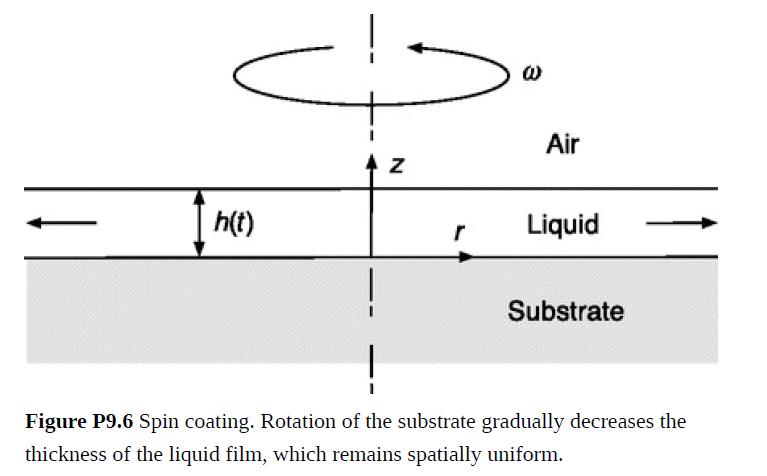A uniform coating of liquid on a flat surface can be created by rapidly spinning the solid
Question:
A uniform coating of liquid on a flat surface can be created by rapidly spinning the solid substrate after some liquid is applied. It is found that such films level quickly and then gradually become thinner. The thinning phase of the process is shown in Fig. P9.6. The film thickness at a given instant is uniform at h(t). Spinning the horizontal substrate at angular velocity ω causes the liquid to flow outward, slowly decreasing h. It is desired to predict h(t).
(a) Assume that vθ(r) = ωr and that the r component of the Navier–Stokes equation can be simplified to
That is, suppose that the thinning is slow enough to be pseudosteady and that h is small enough to neglect the other viscous and inertial terms, as in a lubrication problem with Re = ωh2/ν ≪ 1. However, inertia is crucial here, in that the centrifugal force (ρvθ2/r) is what causes the radial flow. Find vr(r, z, t).
(b) Evaluate the radial flow rate per unit of circumference,
(c) Relate dh⁄dt to q. (Use a mass balance on a control volume that includes the liquid between r = 0 and an arbitrary radial position.)
(d) Solve for h(t), assuming that h(0) = h0.
Step by Step Answer:

Introduction To Chemical Engineering Fluid Mechanics
ISBN: 9781107123779
1st Edition
Authors: William M. Deen





